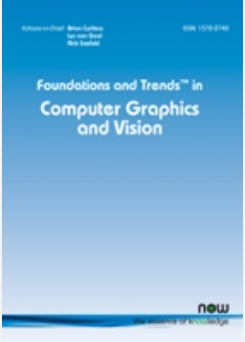通过大气湍流的计算成像
IF 9.3
Q2 COMPUTER SCIENCE, INTERDISCIPLINARY APPLICATIONS
引用次数: 0
摘要
本文章由计算机程序翻译,如有差异,请以英文原文为准。
Computational Imaging Through Atmospheric Turbulence
Seeing through a turbulent atmosphere has been one of the biggest challenges for ground-to-ground long-range incoherent imaging systems. The literature is very rich that can be dated back to Andrey Kolmogorov in the late 40’s, followed by a series of major developments by David Fried, Robert Noll, among others, during the 60’s and 70’s. However, even though we have a much better understanding of the atmosphere today, there remains a gap from the optics theory to image processing algorithms. In particular, training a deep neural network requires an accurate physical forward model that can synthesize training data at a large scale. Traditional wave propagation simulators are not an option here because they are computationally too expensive --- a 256x256 gray scale image would take several minutes to simulate.
求助全文
通过发布文献求助,成功后即可免费获取论文全文。
去求助
来源期刊

Foundations and Trends in Computer Graphics and Vision
COMPUTER SCIENCE, INTERDISCIPLINARY APPLICATIONS-
CiteScore
31.20
自引率
0.00%
发文量
1
期刊介绍:
The growth in all aspects of research in the last decade has led to a multitude of new publications and an exponential increase in published research. Finding a way through the excellent existing literature and keeping up to date has become a major time-consuming problem. Electronic publishing has given researchers instant access to more articles than ever before. But which articles are the essential ones that should be read to understand and keep abreast with developments of any topic? To address this problem Foundations and Trends® in Computer Graphics and Vision publishes high-quality survey and tutorial monographs of the field.
Each issue of Foundations and Trends® in Computer Graphics and Vision comprises a 50-100 page monograph written by research leaders in the field. Monographs that give tutorial coverage of subjects, research retrospectives as well as survey papers that offer state-of-the-art reviews fall within the scope of the journal.
 求助内容:
求助内容: 应助结果提醒方式:
应助结果提醒方式:


